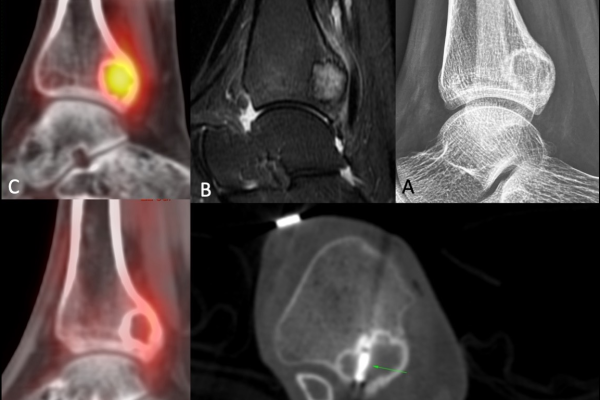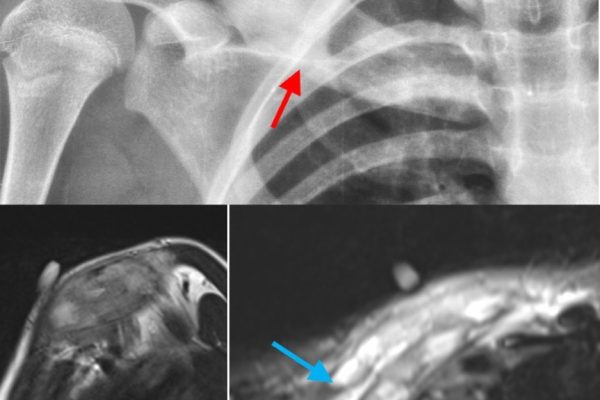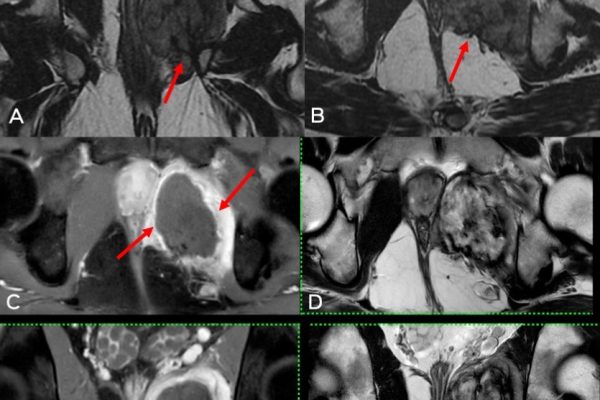X-Ray at Home for Elderly Patients and Infant Imaging: Convenience Meets Care
In India, accessing medical imaging services can be challenging for elderly patients and infants due to mobility issues, discomfort, or the risk of exposure to infections in clinical settings. For years, long waiting times, hospital travel, and the threat of hospital-acquired infections have made diagnostics a stressful process for vulnerable groups.
The advent of X-ray at home for elderly patients and infants is transforming this experience. By bringing radiography into the home, elderly individuals can undergo scans without the discomfort of travel, and infants can be imaged in the comfort of their familiar surroundings. This shift isn’t just about convenience; it’s about making healthcare safer, faster, and more patient-centric.
This blog delves into what home-based radiography is, why it’s needed, its benefits, and how it works. We’ll also explore its role in chronic and palliative care, as well as the integration of advanced techniques like angiography and imaging. Additionally, we will discuss how Picture This by Jankharia is setting benchmarks in India for modern, patient-first diagnostic care.
What is Radiography at Home?
Radiography at home means conducting medical imaging, such as X-rays, within the patient’s own residence using portable X-ray machines. These devices are compact, digital, and safe, producing results that are equivalent in quality to hospital-based imaging.
What makes this service unique is the seamless integration of three aspects:
- Portable machines designed to work in non-clinical settings.
- Trained radiographers who ensure accurate and safe procedures.
- Digital connectivity that allows instant sharing of results with healthcare providers.
Simply put, radiography at home takes the hospital’s diagnostic capability and makes it available right where the patient is, without the stress of travel or exposure to infection.
Why is X-Ray at Home Needed?
For both elderly patients and infants, traditional hospital visits can often feel more like an ordeal than a medical necessity.
1. For Elderly Patients
Elderly individuals often struggle with mobility due to chronic conditions like arthritis, joint pain, or respiratory illnesses. Some are bedridden, while others are recovering from surgeries. For them:
- Travelling long distances to a hospital is exhausting.
- Crowded hospital lobbies often become hotspots for the spread of contagious illnesses.
- Physical discomfort from moving between wards or imaging rooms worsens recovery.
2. For Infants
Parents know how stressful it can be to take a baby or toddler to the hospital. Infants are particularly sensitive to new environments, and:
- Hospital visits often disrupt their feeding or sleep schedules.
- Unfamiliar surroundings can cause crying and anxiety.
- Parents themselves feel stressed balancing care with logistics.
In both cases, X-ray at home for elderly patients and infants removes these hurdles, ensuring that diagnostics do not come at the cost of patient comfort.
Advantages of Home-Based X-Ray
One of the most powerful reasons patients and families are embracing home-based imaging is the range of benefits it offers.
1. Enhanced Comfort
Undergoing X-rays at home reduces anxiety significantly. Patients remain in the comfort of their own homes, close to family and support. Elderly individuals cooperate better when they’re not stressed by travel, and children remain calmer in their own spaces. This emotional comfort often translates into more precise, higher-quality results.
2. Reduced Infection Risk
Hospitals, by their very nature, expose people to multiple pathogens. For seniors with weak immunity or infants with delicate health, this exposure can be risky. By conducting X-rays at home, families can avoid:
- Contact with hospital-acquired infections.
- Exposure to antibiotic-resistant bacteria.
- Cross-contamination risks in crowded areas.
3. Convenience and Flexibility
For caregivers and working family members, home-based radiography is a huge relief. Appointments can be scheduled around patient routines, whether that’s late evening for infants or weekends for elderly care. It saves time, reduces physical strain, and ensures continuity in preventive care.
4. Timely Diagnosis
Speed is often the difference between early treatment and complications. With radiography at home, results are delivered digitally to doctors within hours, enabling rapid decision-making and treatment. This is particularly valuable in cases of chest infections, fractures, or chronic disease monitoring where time-sensitive treatment is essential.
How Home-Based Radiography Works
The success of X-Ray at Home relies on a simple yet effective ecosystem of equipment, expertise, and seamless integration.
1. Portable Radiography Equipment
Today’s machines are not the bulky, wired systems you see in hospitals. They are:
- Lightweight and battery-operated.
- Safe, meeting all radiation protection standards.
- Capable of producing digital images that can be enhanced for clarity and shared instantly.
2. Trained Radiography Professionals
The process is not DIY. Certified radiographers visit the patient’s home, equipped with PPE and sanitisation kits. Their role goes beyond operating the machine; they comfort patients, position them accurately, and ensure consistent imaging standards.
3. Integration with Healthcare Providers
Once the imaging is complete, results are securely uploaded to cloud platforms, accessible to doctors in real time. This creates a seamless loop where:
- Radiographers conduct the imaging.
- Doctors receive and analyse results quickly.
- Patients get treatment recommendations without delay.
Applications in Infant Imaging
Infant care is one area where home-based radiography truly shines.
- Minimised Stress: Babies remain calmer at home, reducing crying or movement during scans.
- Parental Involvement: Parents can comfort and assist, making the procedure smoother.
- Tailored Scheduling: Scans can be done around nap or feeding times, ensuring minimal disruption.
The outcome? A stress-free experience for both child and parents, with high-quality imaging achieved in fewer attempts.
Role of Radiography at Home in Comprehensive Care
The importance of home-based imaging goes far beyond single scans. It’s a critical enabler in comprehensive healthcare delivery.
1. Chronic Disease Management
Elderly patients with conditions like arthritis, osteoporosis, or COPD require frequent imaging. Home-based services:
- Ensure patients don’t miss essential check-ups.
- Provide doctors with real-time disease progression data.
- Help in adjusting medications or treatment promptly.
2. Postoperative Care
Recovering patients often dread hospital visits. With radiography at home:
- Healing progress can be monitored without leaving bed.
- Potential complications like infections or misalignments can be caught early.
- Surgeons receive updates without overburdening patients with travel.
3. Palliative Care
In palliative care, comfort is the priority. Home-based imaging helps by:
- Supporting pain management plans.
- Avoiding stressful hospital transfers.
- Making it possible for patients to heal in a setting that feels safe and familiar.
Integrating Advanced Imaging Techniques
While X-rays remain the foundation of diagnostics, the future lies in integrating advanced techniques like angiography and imaging.
1. Angiography and Imaging
Angiography is critical in visualising blood vessels and diagnosing cardiovascular conditions. Though currently limited to hospital setups, technology is moving toward making these services more accessible outside clinics. This will complement existing radiography at home, creating a more comprehensive diagnostic ecosystem.
2. Innovations in India
At Picture This by Jankharia, we are proud to lead the way in integrating advanced imaging technologies with patient-centric services. Our focus is on combining innovation with accessibility, ensuring that patients not only get accurate diagnostics but also enjoy a seamless care journey from scan to consultation.
Comparison: Home X-Ray vs. Hospital-Based X-Ray
| Feature | Home-Based Radiography | Hospital-Based Radiography |
| Comfort | High (done at home) | Low (crowded settings) |
| Infection Risk | Minimal | Higher (exposure to others) |
| Convenience | Flexible scheduling | Long waiting times |
| Cost | Moderate, depends on provider | Varies by hospital |
| Doctor Access | Via digital reports + teleconsult | Immediate (if in hospital) |
| Best For | Elderly, infants, bedridden, chronic patients | Emergency walk-ins, complex imaging |
Conclusion
The concept of X-ray at home for elderly patients and infants is more than just a convenience; it is a step toward a more accessible, patient-first healthcare system. By reducing infection risks, improving comfort, and enabling timely diagnosis, radiography at home empowers families and doctors alike.
With the integration of advanced technologies like angiography and imaging, the future of diagnostics will only get stronger. And as we continue to innovate, our mission remains clear: to make world-class diagnostics available at your doorstep, so that healthcare is always within your reach.
Frequently Asked Questions
Yes, it is absolutely safe. Portable X-ray machines are designed to operate with minimal radiation exposure, and trained professionals follow strict protocols to ensure patient safety.
- For elderly patients, it reduces physical strain and avoids unnecessary exposure in crowded hospitals.
- For infants, the familiar environment makes the process smoother and less stressful.
In both cases, the diagnostic quality remains on par with hospital imaging.
All X-rays are performed by certified radiographers who are trained in both technical and patient-care aspects. When we send a radiographer to your home, they arrive with PPE, sanitisation kits, and portable equipment.
They not only ensure correct imaging techniques but also comfort patients, explain the process, and answer caregiver questions. This human touch is often what makes the difference between a stressful and a reassuring experience.
Once the X-ray is completed, the images are uploaded digitally to secure platforms. At Picture This by Jankharia, we ensure your reports are shared instantly with your doctor. This enables:
- Faster analysis and diagnosis
- Easy comparison with past scans
- Teleconsultations when needed
This integration reduces delays and ensures continuity of care.
Home-based radiography is suitable for a wide range of conditions, including:
- Bone fractures and injuries
- Respiratory illnesses such as pneumonia or COPD
- Postoperative healing
- Monitoring chronic diseases like arthritis or osteoporosis
- Palliative care monitoring
If the condition requires regular or follow-up imaging, radiography at home is an ideal solution.
Currently, angiography is a hospital-based procedure because it requires complex equipment and specialised environments. However, advancements are being made that may eventually bring simplified versions into community or near-home setups.
For now, angiography complements radiography at home by reducing follow-up needs once the main procedure is done in a hospital setting.
At Picture This by Jankharia, we have always believed that healthcare should revolve around the patient, not the other way around. By combining advanced equipment, experienced professionals, and digital integration, we provide home-based imaging that is both safe and reliable.
Families trust us because:
- We offer timely services with flexible scheduling.
- Our reports are accurate, detailed, and digitally accessible.
- Every visit is delivered with attention to comfort, security, and understanding.
For us, diagnostics are not just about images; it’s about patient care with compassion.



